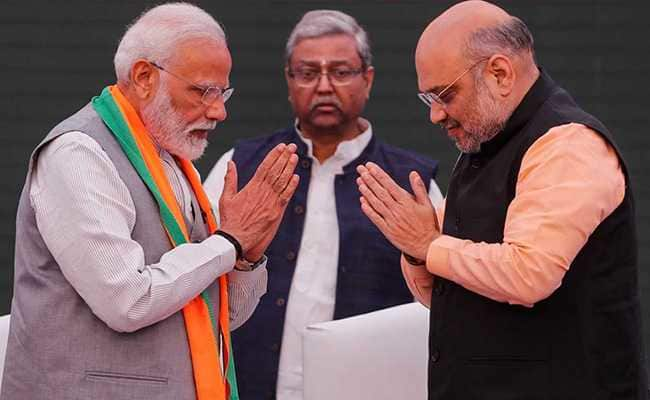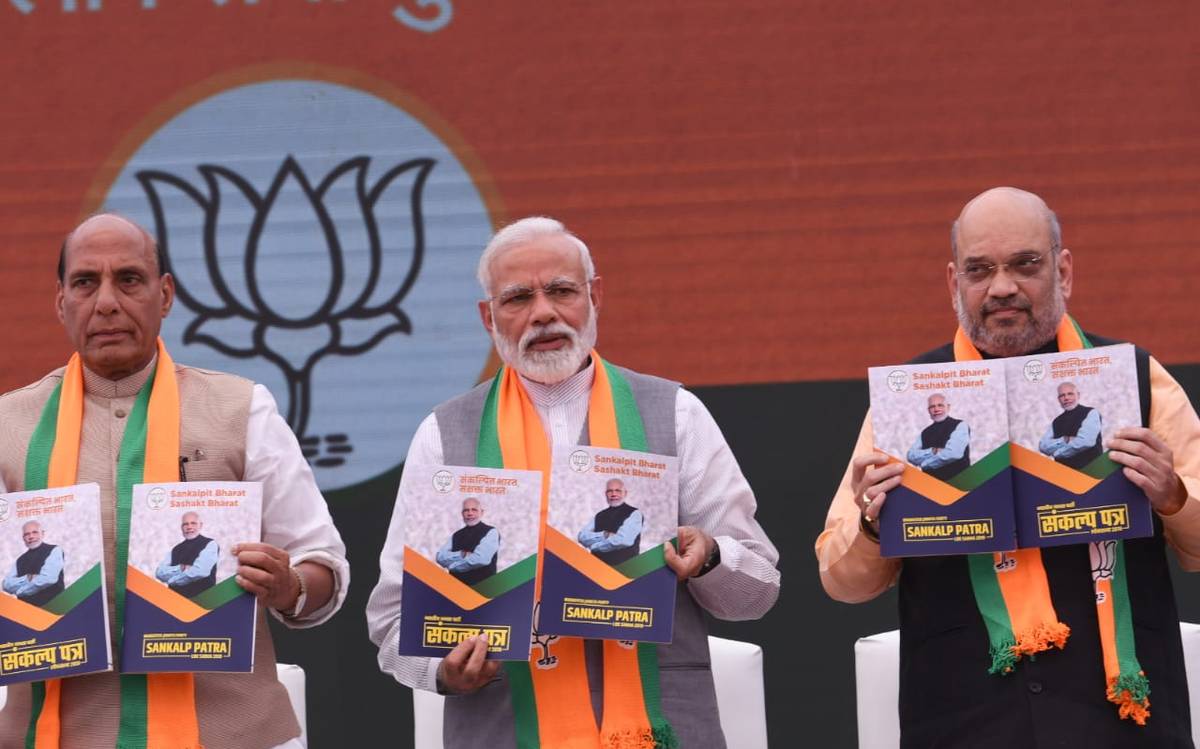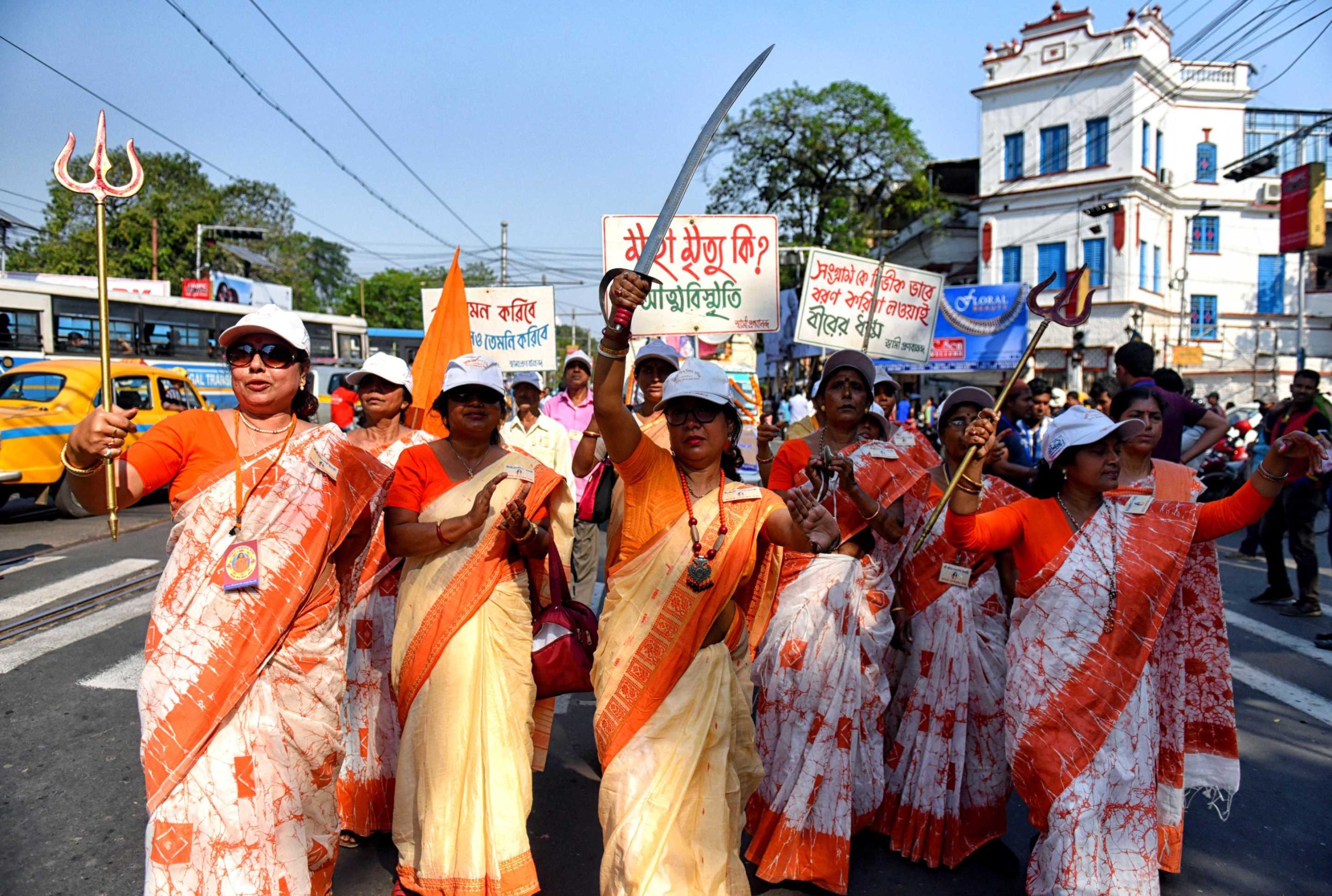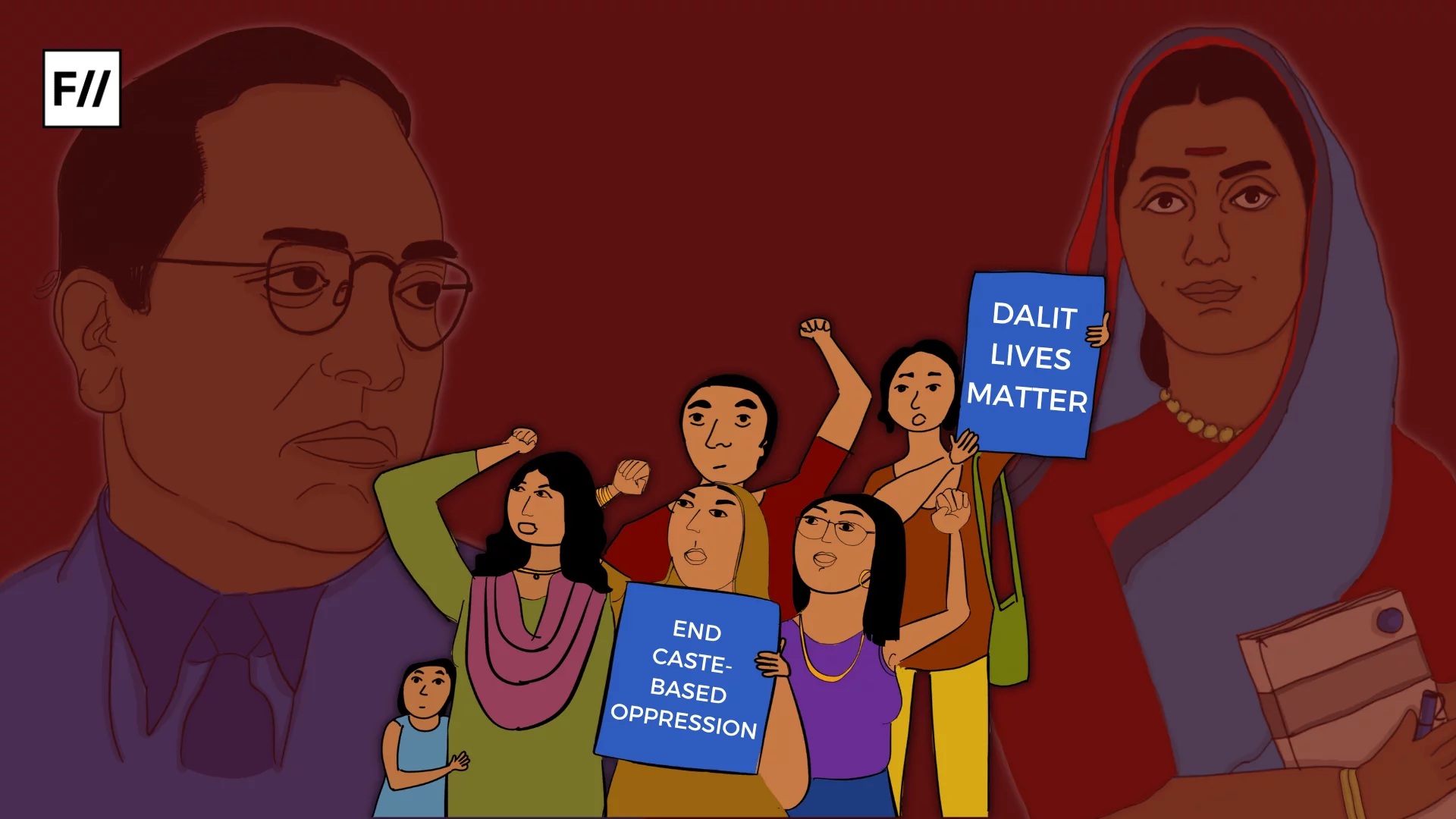On Monday morning, the BJP released their political manifesto ahead of the upcoming elections. The manifesto titled Sankalp Patra opens with a strong emphasis on development. It goes on to take a strong stance against terrorism, expresses commitment towards national security and economic growth (oddly, yoga is discussed under economy) and dedicates an entire page to ‘bharatiya culture.’

As noted by many others, the word ‘development’ appears over 70 times in the manifesto. It is with this vision of development and crisp buzz-words like ‘global’ and ‘world-class,’ that the manifesto evokes an image of a high-speed, start-up friendly, cosmopolitan India. Unsurprisingly, what forms the subtext of this developed ‘new India’, is the promise of a Ram Mandir, conserving Sanskrit and ‘protecting’ the Sabrimala temple from the entry of women.
The Sankalp Patra makes bold and exact promises – like doubling farmers incomes and reducing the percentage of those living beneath the poverty line to single digits. But beyond the confidence of these precise statistical promises, the definition of development in the Sankalp Patra is mostly rhetorical and revolves around unspecified terms like ‘modernisation’ ‘combating extremism’ and ‘heritage.’ What counts as extremism? Can the numerous mob lynchings and cow-related murders in our country fall into this bracket? The manifesto does not tell us.
development for whom, on whose terms and at what cost?
Similarly, in such a large and diverse country, with innumerable communities and customs, who gets to decide what culture or heritage is? The Sankalp Patra distils ‘heritage’ into the essentials – Yoga, Sanskrit, The Ram Mandir & the Ganges- anything leftover may or may not be included in the vast, rosy ambit of ‘culture & heritage.’ But the biggest problem with arbitrary and emotional language is that it distracts from asking key questions about the BJP’s haloed vision of development- development for whom, on whose terms and at what cost?
Is It Pro-Farmer?
The BJP Manifesto has dedicated an entire section to improving the lives of farmers, yet it pays no attention to the demands of the farmers’ march that took place earlier this year. These demands which include loan waivers, land rights, compensation for crop loss and higher MSP on crops, along with a judicial system to ensure that farmers receive the MSP on time, have been completely ignored. One must also keep in mind that the government has delayed releasing crucial data about farmers suicides for two years now. What may seem pro-farmer on the face of it, has been written out only by disregarding what farmers across the country marched and protested for, and by withholding important data that may, in fact, reflect a grim and bleak reality of ‘development’ (or the lack of it) for farmers over the last four years.
Also read: Women & Minorities: Here’s What The New Congress Manifesto Has to Say
What About Gender?
The section on ‘Ensuring Equal Rights’ for women reiterates the prohibition of the Triple Talaq, (which has already been declared unconstitutional) and is silent on the vast range of other issues that affect women of various castes, religions, and regions in India. It does not address the question of Muslim women receiving compensation and economic support after their husbands are
While it is necessary to do away with patriarchal customs, it seems that the strong stance against Triple Talaq has little to do with gender equity. Rather, it leads to a situation where certain men are incarcerated, while other men of other religions can get away with deserting their wives as a ‘civil’ offence. Optimists could still argue that the manifesto aims to prioritise gender justice over religious tradition. But this hope is quickly shattered when it comes to the Sabarimala temple. Regarding this, the manifesto seeks to present the Sabarimala case before the Supreme Court once again and hopes to ‘secure constitutional protection on issues related to faith and belief:’ a veiled way of saying that women must not be allowed entry into the Sabarimala temple.
The Sankalp Patra has a two-line section titled ‘Empowering Transgenders’, which once again relies on broad language like ‘adequate socio-economic and policy initiatives.’ It is unclear what the measure of ‘adequacy’ for gender justice is. Additionally, with a tokenistic inclusion of people who are transgender, pressing issues like the discriminatory Trans Bill are swept under the carpet.

What About Social Justice?
The Sankalp Patra makes surprising claims at various points- including stating that the BJP has already ‘achieved access and equity in school education.’ The idea that all systematic and structural barriers to school education have been completely eliminated in a matter of four years reflects on a shallow understanding of both education and equity. When a manifesto fails to take into account the complex social ecosystems that create inequalities in the first place, it escapes accountability for working towards a more just and equitable education system.
This superficial commitment gets concealed under attractive promises of bringing technology to classrooms and promoting innovation in schools. This blurring of social justice concerns comes as no surprise, especially when the section on ‘Inclusive Development’ has only a single, peripheral line about both caste and religious minorities and does not outline any clear policy or initiative to empower marginalised communities. It becomes evident that the development model upheld by Sankalp
What counts as extremism? Can the numerous mob lynchings and cow-related murders in our country fall into this bracket? The manifesto does not tell us.
Finally, development cannot just be about large categories like the nation and the economy; it has to be about people. When we speak in broad strokes about ‘Ease of Doing Business,’ it is easy to ignore the costs of diluting environmental legislation for business, or the lives of the people who are impacted by the resulting environmental destruction. For a document that unflinchingly evokes development wherever possible, it does little to centr people, especially those with less power, at the centre of the conversation around development. Even when it does, this centring feels either
Also read: Political Parties And Their Token Representation of Women
The idea that a meaningful approach to development must promote freedom and build capacities for all human beings, is not a new one. But the vision for development in the BJP manifesto is far from this approach. As long as Indian aspirations for the future are tied to an exclusionary right-wing politics, the emerging development model will strengthen only those who are favoured by the politics it draws from. Beyond the catchy alliteration of ‘Sabka Saath, Sabka Vikaas,’ it seems that even on paper, it was never about ‘everyone’ to begin with.
Featured Image Source: The Hindu
About the author(s)
Anagha is pursuing her MA in Media & Culture from TISS Mumbai.




